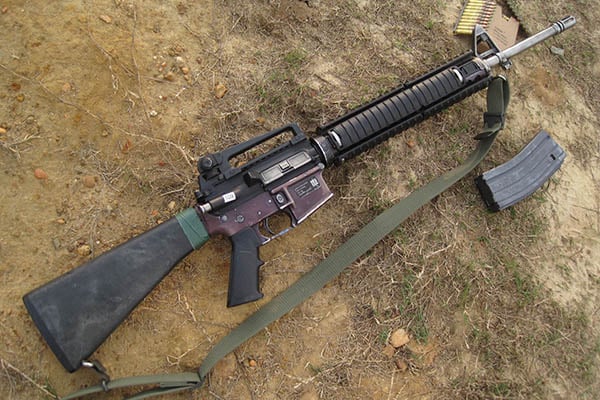
Last Updated on
An overview of the All Army Small Arms Championships hosted by the Army Marksmanship Unit at Fort Benning and how it benefits military personnel as well as what civilians can learn from it.
A wise commander once noted there are two types of troops on a battlefield: Marksmen and Targets. While most uniformed personnel are not performing infantry missions, everyone requires the ability to handle small arms. Base qualification is the same for all personnel regardless of military occupational specialty. Everyone in uniform is expected to have a basic ability with firearms and everyone with a firearm needs the skill to use it.
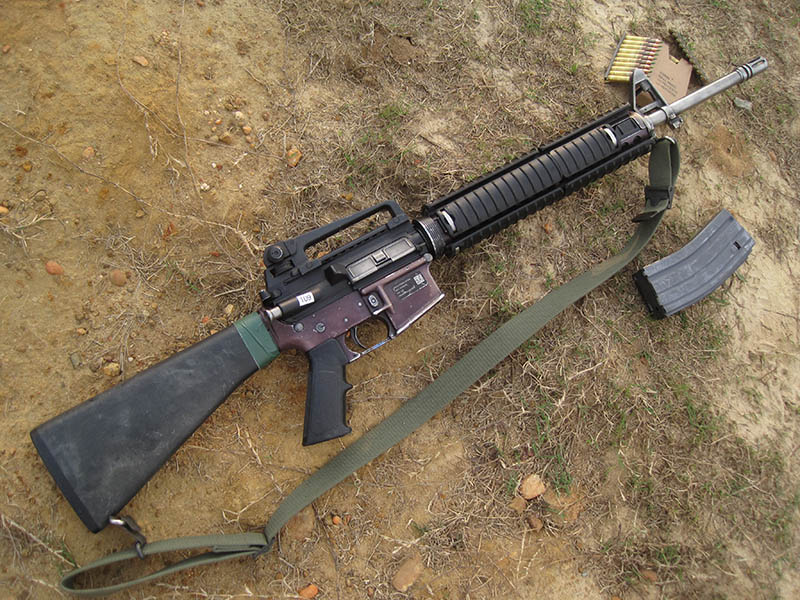
Various programs to train small arms skill across the force have existed since the Industrial Revolution. All of these programs can trace their roots to a competition shooting event that originally spawned it. The first programs began as simple target shooting from typical field positions starting with rifled muzzleloaders and then single-shot breechloaders. Manual repeaters allowed sustained, rapid fire and magazine-fed rifles had courses incorporating speed reloading. These initial target events would branch off into their own, differing shooting disciplines.
Qualification and training courses were initially based off these competitions but deliberately kept simple and easy enough for new recruits and personnel lacking marksmanship experience to pass annually. Often, they were simplified over the years. I’ve been in the military for a quarter century now, and every change to Army and Marine qualification courses during this time have continued to make it easier to earn a passing score.
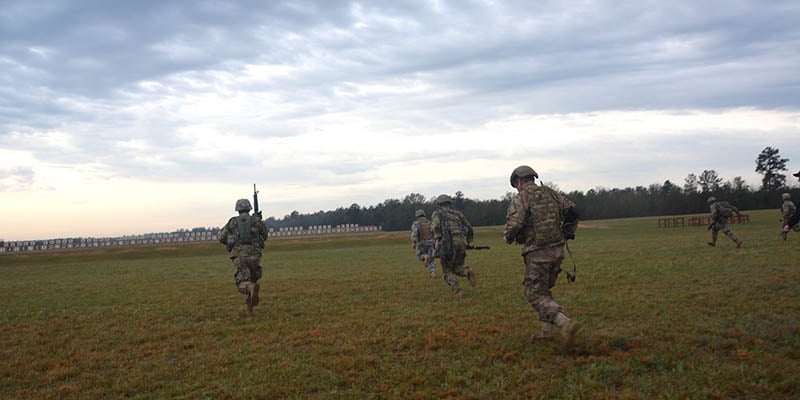
Contrast this to competitive courses that have evolved to become more difficult or take more tasks into account over the years as advances in equipment and shooter skill were made. While some of these events continue to push the precision envelope, Service Conditions shooting sought to retain factors most useful to military personnel. Skirmisher courses were created that added use of varying humanoid-shaped targets, had competitors running, maneuvering, and shooting targets under time pressure, and required use of as-issue weapons, ammunition, and field gear.
Interest and support for these events have ebbed and flowed over the years. During the initial Iraq and Afghanistan mobilizations the Army was again receptive to higher-level shooting events. Like all small arms training, this event has morphed over the years. Initially starting with National Match-derived courses similar to those that spawned the still-current Marine Corps course, this event changed to take more fire and maneuver into account.
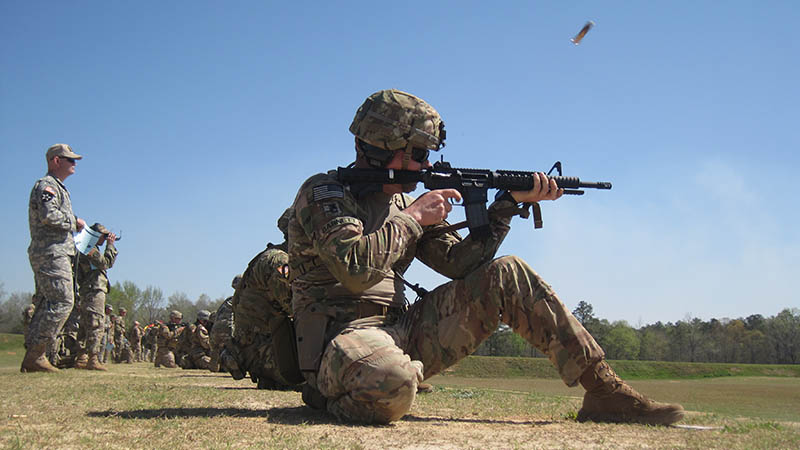
Nearly every string of fire in the rifle event begins with run down after targets appear, requiring competitors to run 25-100 yards before engaging targets. Exposures routinely begin at 400-500 yards, with multiple strings of fire on the clock with lessening time limits as the shooters advance, sometimes as close as 25 yards. There’s also stages with competitors first running for greater distance and scored for time before beginning a series of run down shoots. Pistol courses are managed in similar fashion, with precision portions beginning out to 35 yards and advancing up to 10 yards, with all timed strings beginning holstered and requiring reloads. Finally, action speed shooting featuring stages similar to USPSA or IDPA competition using both weapons have shooters maneuver and fire around cover and barricades, and hitting as fast as possible with time-plus scoring.
Firepower Used
All equipment used in Service Conditions matches are as-issued. All Army, just like similar events held throughout NATO and Commonwealth countries, forbids “match grade” equipment and the only gear allowed is exactly that currently issued to troops. U.S. competitors shoot an M16/M4-series rifle with issue sights and M9 pistols with standard ball ammunition. Uniforms, boots, web gear, holsters, and helmets must be common issue. Nearly everyone uses some form of MOLLE (Modular Lightweight Load-carrying Equipment) web equipment in either a belt or chest-mounted rig with a ACH (Advanced Combat Helmet), MICH (Modular Integrated Communications Helmet) or similar helmet, all depending on unit issue and shooter’s preference. Holsters are primarily Blackhawk! SERPA or Safariland ALS (Automatic Locking System) models.
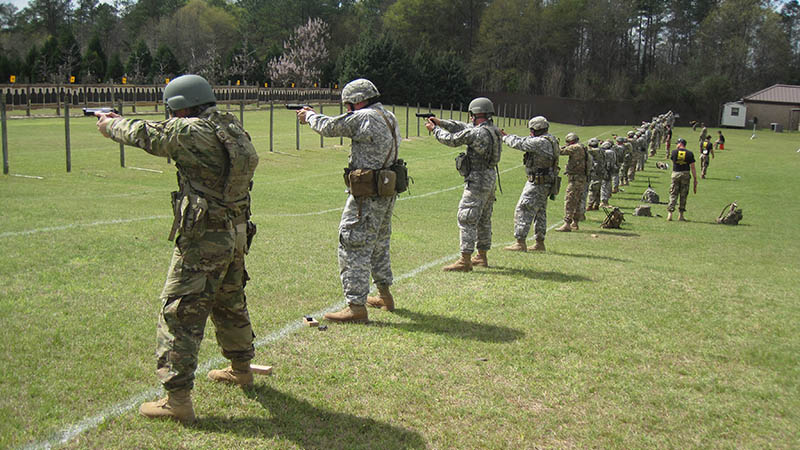
Previous events required iron sights only to push the minimal issue aspect. As most troops in the U.S. and around world are routinely seeing optics as general issue, All Army adopted use of current-issue optics for most of the courses with Trijicon ACOGs being the dominant choice with TA31F or the older TA01 reticles. Not surprisingly, at least for experienced marksmen, the optics didn’t have a huge influence on scores compared to previous events shot exclusively with iron sights. Shooting well is primarily a factor of the shooter’s marksmanship. Equipment helps but does not influence skill that isn’t already there.
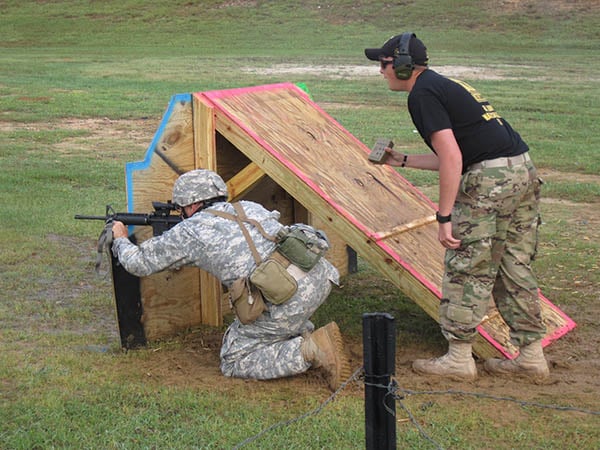
While the skirmisher aspects are obviously useful, precision is also important. It’s the reason why military teams continue to support formal National Match competition and All Army also feature full-blown rifle and pistol National Match Courses on bullseye targets. The AMU did it in part to double the number of Excellence In Competition courses and to provide more opportunities for competitors chasing “Leg” points. It also served as a valuable test. Average scores for NMC events are well known but are typically shot with match-grade equipment spelled out in the Civilian Marksmanship Program rules. This served to show how rifle shooters fare using a rack-grade M16 or M4, issue iron sights and ball ammunition, with no shooting coat or sling to dampen movement, and pistol shooters firing issue M9s at 50 yards with one hand would fare.

Good shooters have long known the difference between regular, rack-grade, as-issued equipment compared to the most radical match-grade equipment accounts for 10-15% of the score at most. The difference is usually less. This event proved the truth of that estimate yet again. The rifle NMC EIC match was won with a 437 and the pistol with a 243. Allowing for a 10-15% reduction in score, these results are on par with typical winning scores with match-grade gear. It should be noted that rack-grade rifles and pistols aren’t precise enough to hold the ten ring on bullseye targets even from machine rest and no amount of human skill can compensate for that, yet a good shooter can still earn about 90% of a typical winning score. Keep this in mind next time someone whines about competitions being unfair due to fancy match guns and gear.
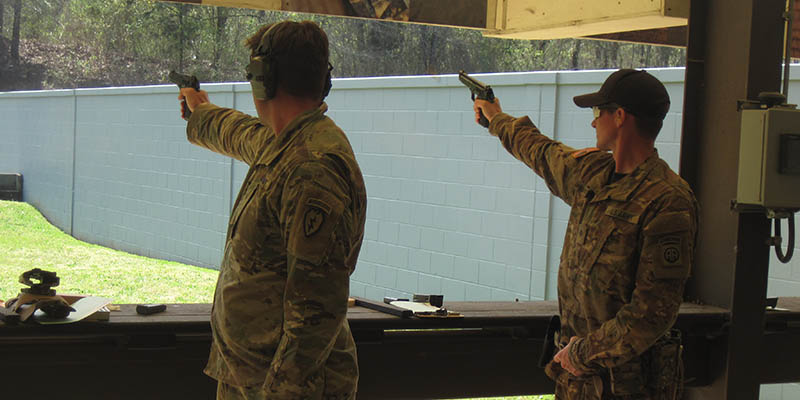
Almost prophetically, Army Times published a headline article pointing out force-wide flaws in marksmanship training while All Army was being held. The fix alluded to on the cover is the AMU’s new Master Marksmanship Training Course. Not surprisingly, this course builds on the knowledge base established over the decades via formal competition. While the MMTC is far from the first attempt addressing training concerns (the Army Reserve and National Guard Training Teams have ran similar courses for years) it brings this knowledge base further down to more end users. Participating in events like All Army puts personnel directly at the source.
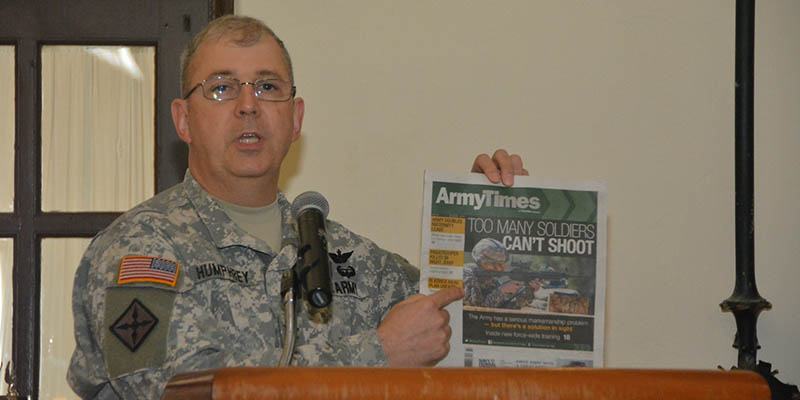
So, marksman or target? In the end, formal events like All Army are really advanced training cleverly disguised as competition. Such events offer a more stringent skill evaluation to find out what the best possible performances can be rather than being satisfied with passing a “good enough” minimal standard course. Participating in something more arduous and exacting than a routine qualification that never advances skills or standards beyond basic, recruit training makes more marksmen and less targets.




Leave a Reply